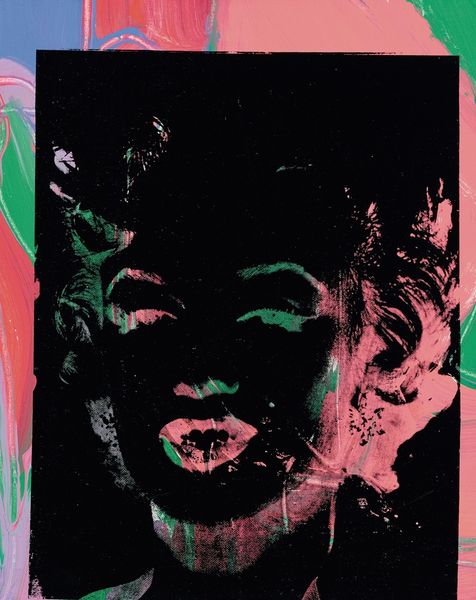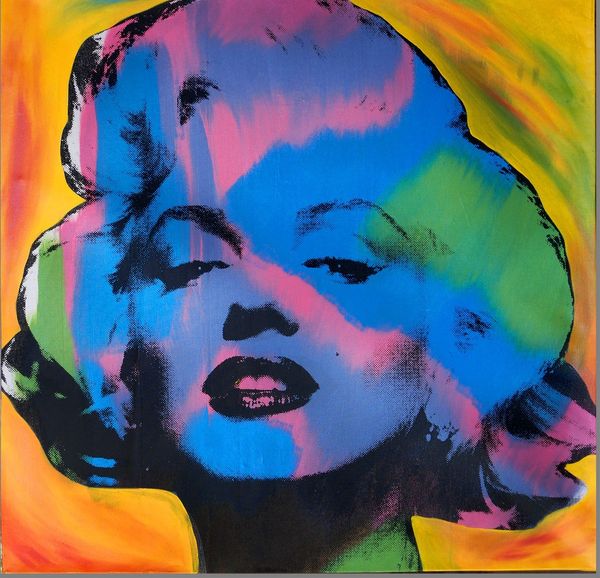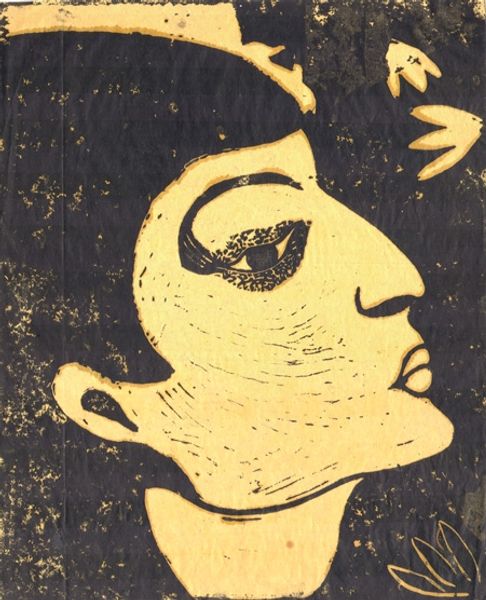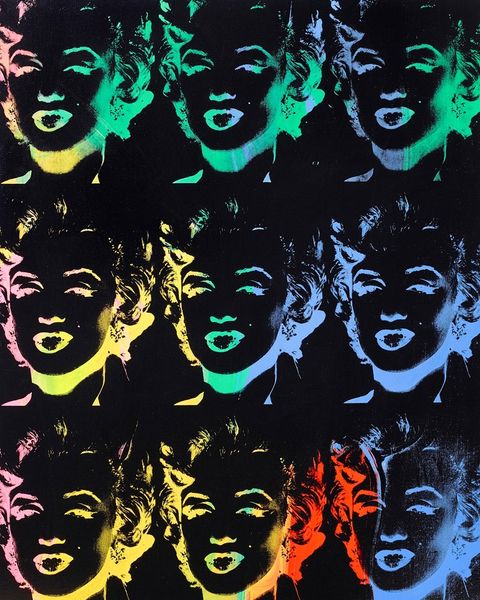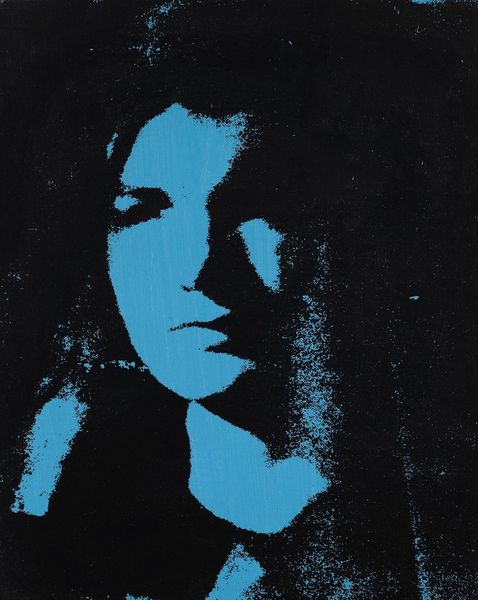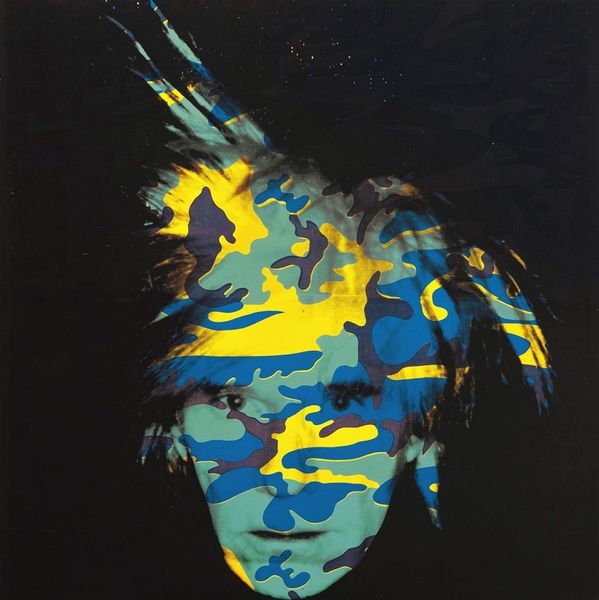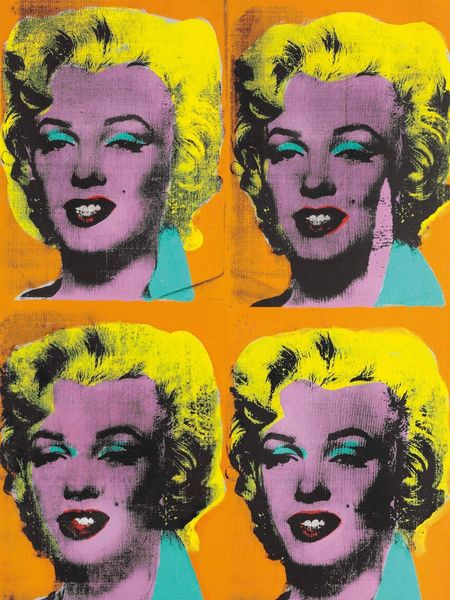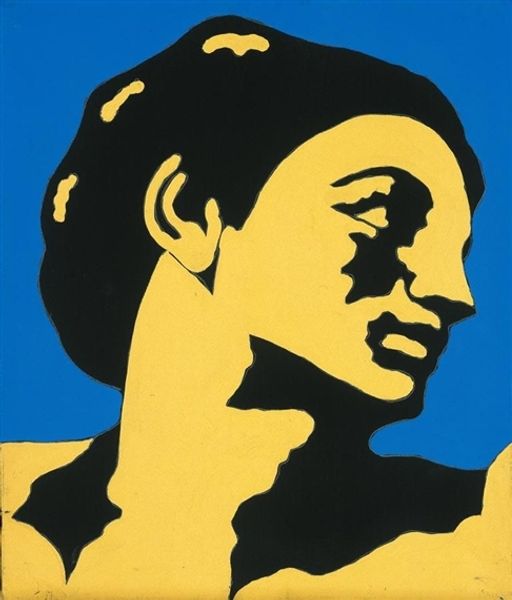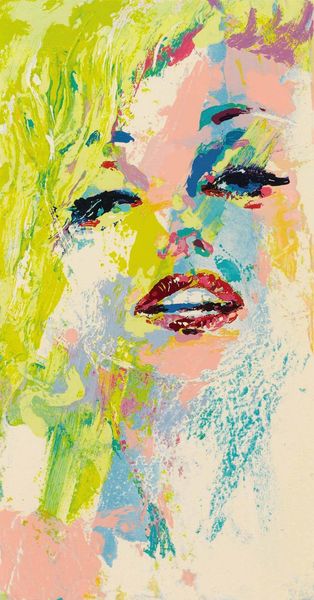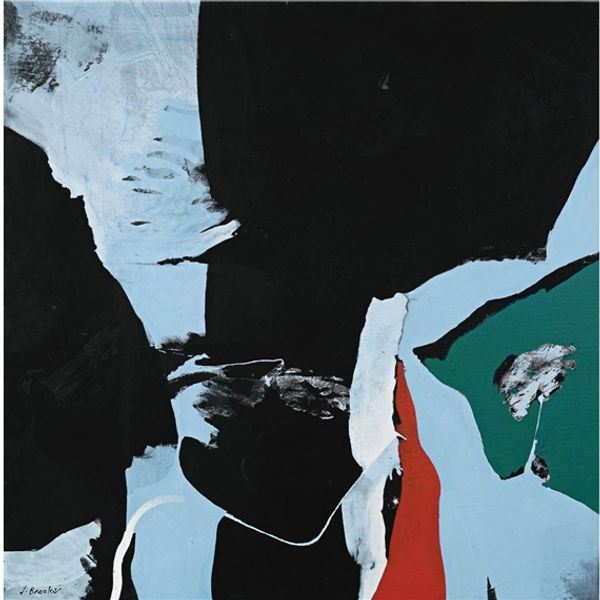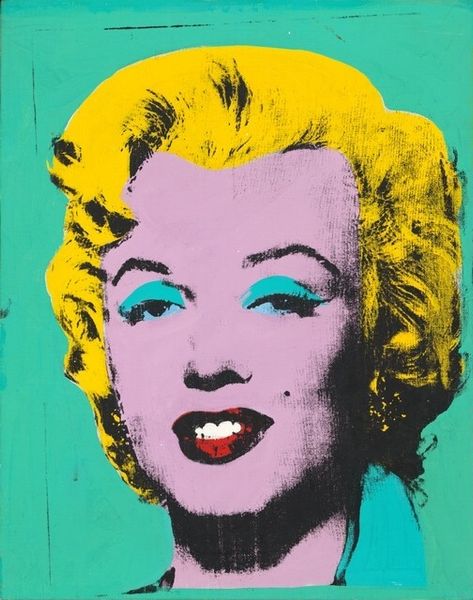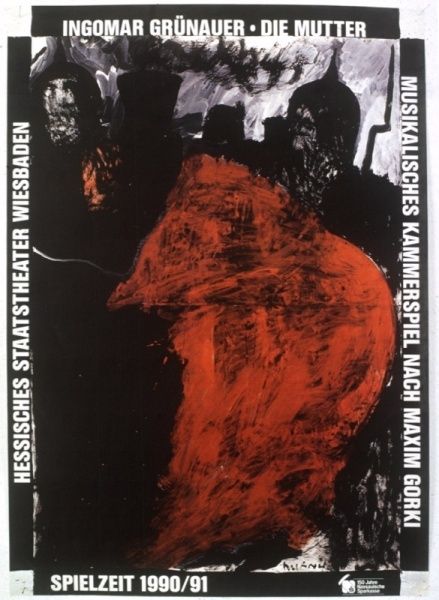
Copyright: Modern Artists: Artvee
Editor: So here we have Andy Warhol's "Marilyn," made with acrylic paint between 1979 and 1986. The stark contrast makes it feel like a really bold statement, and a little bit eerie. What do you make of it? Curator: It’s fascinating to consider Warhol’s obsession with celebrity and mass production in the context of art history. He's really zeroing in on the public consumption of images. Why do you think he chose Marilyn Monroe as a subject? Editor: I guess because she was such a huge icon at the time, immediately recognizable. Her image was everywhere. So Warhol is commenting on that, right? How celebrity becomes a commodity? Curator: Exactly. Warhol, by reproducing her image, is participating in this process but also critiquing it. Think about the silkscreen technique, how it mirrors the mass media reproduction that created the “Marilyn” phenomenon in the first place. What does the fragmentation, the sometimes garish use of color suggest to you? Editor: I hadn't thought of it that way. Perhaps it signifies the fracturing of her identity, how the media image obscured the real person? Or maybe it shows the fleeting nature of fame itself. Curator: Precisely. It makes us question the authenticity of images and their impact on our culture, doesn't it? Also, think about where this work might be displayed. A museum, of course, elevates its status. Editor: That's true. Presenting this piece in a gallery context definitely changes how we understand the imagery compared to seeing Marilyn on a magazine cover. Thanks, that perspective helps a lot! Curator: Absolutely! Seeing art within its socio-historical context allows for richer interpretations. Hopefully we both now see this ‘Marilyn’ in a different, more meaningful light.
Comments
No comments
Be the first to comment and join the conversation on the ultimate creative platform.
